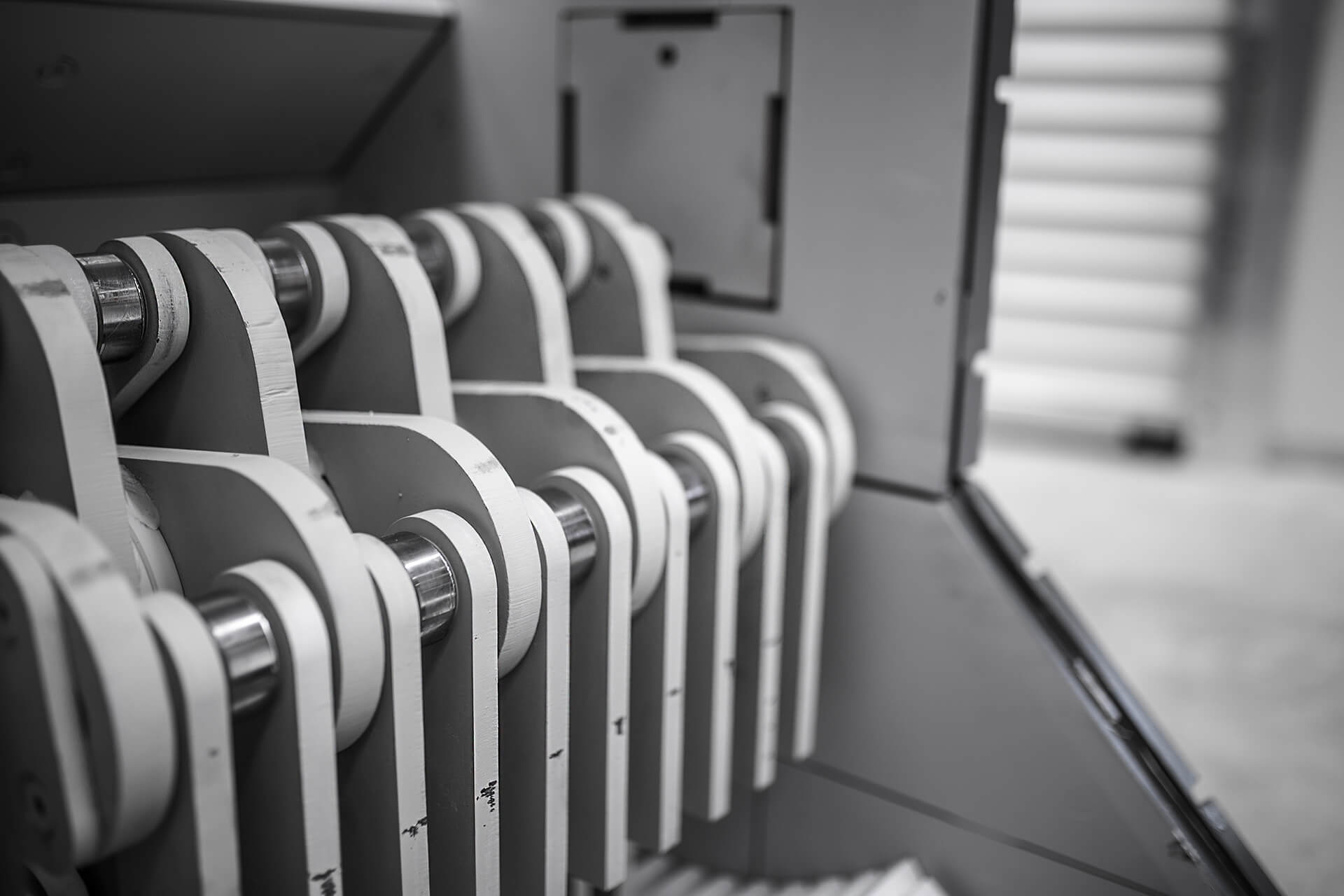Hammer mills are particularly suitable for metal scrap, electrical and electronic scrap or swarf made of steel, aluminium, but also other materials. And due to the easy adjustability during operation, also the baling of non-ferrous metals is no problem. The resultant size is variable and can be changed during operation. This product feature in particular is the best example of its high practicability in use.
► Easy maintenance
| Due to two quick-opening housing accesses.
| Through easily replaceable grinding tools on the beater rotor.
► Processing of moist materials possible
| No ingress of mill material or dust into the bearings
due to external shaft bearing and special housing sealing.
Advantages of the hammer mill
Using conventional technology, many materials are very difficult to break down or subject the equipment to heavy wear. The use of a variety of tools allows us to process a very wide spectrum of a wide range of materials. A range of various sieve containers and grinding bars is used to determine the size of the output fractions as well as forming the composite materials into bales. Different rotor speeds can be adopted to fit the material being processed. The well-engineered welded construction and the divisible machine housing enable quick and easy access to the tools. Due to the additionally integrated hydraulic system, the housing can be opened with minimal effort. The installation of different baffle plates allows us to define precisely the grain size of the materials being processed. Thanks to the automatic overload protection device, we achieve a high level of safety in respect of foreign matter contained in the material, so that the baffle plate can move aside automatically in the case of excessive load.
Wide range of application and highest variability
The flexible design of the shock and impact principle, adapted to the different materials being processed, can be constructed both for the breaking-up of materials and as baling machines, thereby offering a wide-ranging scope of applications.
- Refrigerator recycling as well as electrical and electronic scrap processing as a pre- or post-stage after standard shredding technology.
- Processing of aluminium profiles and composite materials
- Preparation of shredder light fraction for subsequent separation
- Recycling of printed circuit boards, IC components and small electronic equipment
- Grinding of non-ferrous composite materials with subsequent baling
- Processing of large-volume metal swarf
- Preparation of tyre wires for subsequent separation of rubber and iron
- Slag processing
- and much more
![[Translate to Slowakisch:] Hammermills from Erdwich](/fileadmin/user_upload/02-Maschinen/Hammermuehlen/Hammermuehle_1920x500.jpg)

![[Translate to Slowakisch:] [Translate to GB:] Hammermühle HA600](/fileadmin/user_upload/02-Maschinen/Hammermuehlen/ERDWICH_Hammerm%C3%BChle_HA600.jpg)